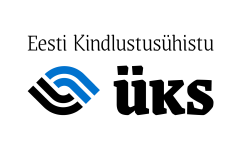 In 2018, Estonian GDP growth slowed to 3.9% in real terms and to 8.6% in nominal terms and was supported by domestic demand and strong foreign demand. The growth was still strong and only slightly exceeded our expectations – our recent forecast in January was 3.7%.
In 2018, Estonian GDP growth slowed to 3.9% in real terms and to 8.6% in nominal terms and was supported by domestic demand and strong foreign demand. The growth was still strong and only slightly exceeded our expectations – our recent forecast in January was 3.7%.
Economic growth was stronger in the second half of the year (4.1%) than in the first (3.6%). In the fourth quarter economy grew by 4.2% yoy and 2.2% qoq, which was strongest qoq growth in the last eight years. In addition, the second quarter GDP growth was revised up by 0.2 pp to 3.9% and the third quarter growth was revised down by 0.2 pp to 4.0%. However, these are preliminary numbers, which will be revised several times. Next large revision of the whole series will be released on August, 30th.

Economic growth was dominated by construction sector
Similarly to 2017, last year, the main contributor to GDP growth was also the construction sector – 28% of the growth came from this sector. The share of construction sector contribution to GDP growth was highest in the last 18 years. However, we expect construction growth somewhat to slow this year. Strong contribution to GDP growth came also from manufacturing; professional and technical activities; transportation and ICT sectors. The growth of manufacturing sector was mainly supported by production and export of mobile equipment, and shale oil and wood. Negative impact to the growth came mainly from agriculture and forestry sector, which was affected by extreme weather conditions last summer.

Foreign demand has been supporting Estonian economy
Although, last year the growth of foreign demand has slid from the peak, it was still strong and offered good export opportunities to Estonian enterprises. Last year, export of goods and services was even stronger than in 2017, increasing by 4%, whereas the growth of export of services exceeded the growth of exports of goods
Domestic demand was strongest in the last five years
The growth of domestic demand accelerated to 5.5% last year and became strongest in the last five years. The growth of private consumption accelerated to 4.6% and was highest in last ten years. Private consumption was mainly supported by real growth of net wages due to strong wage growth and income tax reform. Investments increased by 3.3% and mainly contributed by government and households. Investments of non-financial corporations remained almost at the same level. In the first half of the year, there was a strong decline in investments due to the base effect, while in the second half of the year investment growth was strong.

Productivity growth has improved, but is still lagging behind labour costs
The share of investments in machinery and equipment, R&D and computer software – the assets, which should have more positive direct impact on productivity improvement – have increased in total investments of non-financial corporations. The growth of productivity has increased in the last three years, but is still slower than the growth of labour costs – referring to the deterioration of price-competitiveness. However, goods and services produced by Estonian companies have become more complex and climbed up the value chain.
Economic growth in Estonia is expected to slow this year
This year domestic demand should remain strong. Although, private consumption is expected to slow, investment growth should improve. Weakening foreign demand could somewhat slow enterprises’ export opportunities this year. Industrial confidence, which peaked in the middle of 2017, has weakened last year, mainly in terms of exports opportunities. In our latest forecast on January, 30th, we expect that economic growth will decelerate to 3% in 2019. Although, the growth will slow, economy is expected to remain well-balanced and resilient.















